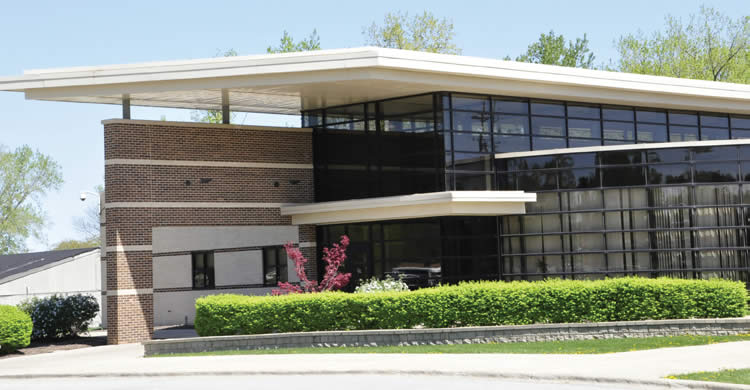SPRINGFIELD–(ENEWSPF)–April 16. 2012. The Classrooms First Commission is expected to release a set of draft recommendations Tuesday that would make it easier for school districts to consolidate and help them save up to $1 billion in operations costs by sharing services, Lt. Governor Sheila Simon said today.
No districts would be forced to consolidate under the recommendations, but the state would require counties with small and declining school-age populations to study whether county-wide consolidation or sharing services would save money and boost learning.
Money recouped from what Simon calls “voluntary and virtual consolidations” would be redirected to public school classrooms so students and taxpayers would benefit from the efficiencies, according to the draft report.
“These recommendations are a road map to stronger, streamlined school districts,” said Simon, chair of the Classrooms First Commission. “There’s no one-size-fits-all way to achieve efficiency, but there are many ways to eliminate wasteful spending and free up money to improve learning in classrooms.”
The Classrooms First Commission is a bi-partisan group of education stakeholders that was charged last fall by Governor Quinn and the General Assembly to reduce duplicative education spending and improve educational outcomes. It reviewed several paths and collected input from hundreds of Illinois educators and taxpayers through public hearings and an online survey.
The commission found that mass consolidation would cost state taxpayers nearly $4 billion up front under current law. A more cost-effective approach would be to eliminate or modify state regulations that discourage districts from voluntarily consolidating. At least 40 districts were in the process of or considering such realignments in the past year, according to the report.
“Forcing districts to merge is not realistic, but providing them the resources and tools to consolidate on a voluntary or virtual basis is well within reach.” said State Rep. Linda Chapa LaVia, a member of the Classrooms First Commission.
The draft recommendations to promote voluntary consolidation at little or no new cost to the state include:
- allowing compact but not contiguous districts to consolidate; currently districts must be compact and contiguous
- expanding the regional board of school trustees dissolution authority, by allowing local districts with under 750 enrollment to seek dissolution with or without a referendum; currently this is an option for districts serving communities with under 5,000 people
- piloting a new capital project list that targets school construction money at districts willing to consolidate and that are in need of new buildings, additions, and/or building renovations
- phasing in lower local tax rates for new unit districts; currently, elementary and high school districts become a lower, unit taxing district immediately after consolidatingrequiring counties with small and declining school-age populations to conduct efficiency studies that could lead to shared services, district mergers, or even county-wide districts; 12 counties currently have county-wide districts and another 16 counties have small and declining student populations, according to state and federal population projections through 2030
“These changes will help to remove red tape so districts can more efficiently provide students with a quality education whether that be through consolidation or shared services,” said State Superintendent of Education Christopher A. Koch.
The draft recommendations also include two legislative proposals that would promote shared services in areas such as technology, transportation and food service across districts.
The first proposal would create a revolving fund to provide short-term, low-interest loans to seed cooperative service agreements or conduct efficiency studies. The loans would be repaid with the money gained through resulting streamlining.
A second proposal would authorize the Illinois State Board of Education to provide a web-based resource management program to districts to help them identify potential savings in five major spending areas: instruction, transportation, food services, administration and facility maintenance. A pilot program of a similar service in Ohio resulted in at least a 5 percent operational savings at participating districts. At that rate, Illinois districts could realize a net savings of almost $1 billion.
“Right now districts are required to complete many annual reports, but they simply end up in a black hole and are never linked,” said Michael Jacoby, executive director of the Illinois Association of School Business Officials and member of the commission. “This new service would create a business analytics tools for districts to compare their data, learn best practices and make operational changes to initiate new efficiencies. This could free up significant resources for instruction and offset the funding losses all districts are currently experiencing.”
The Governor’s office would establish a resource repository for the shared service agreements so districts could have samples to follow. It could be patterned after a shared service repository for municipalities in New Jersey.
“Shared services offer school districts the opportunity to provide more diverse curriculum options and expand educational opportunity, while streamlining delivery and saving money,” said Jason Leahy, executive director of the Illinois Principals Association and a member of the Classrooms First Commission. “It is my hope that the Classrooms First Commission recommendations will point districts towards the tools and resources they need to accomplish this goal.”
A statewide health insurance pool and a state-run online professional development tool for various health/safety trainings are additional options for savings and streamlining, the report states.
“Through these recommendations, we hope to eliminate barriers to efficiency and provide school districts the tools they need to streamline operations and put resources into the classroom,” said Paul Swanstrom, executive director of the High School District Organization of Illinois and a member of the Classrooms First Commission. “I look forward to working with Lt. Governor Simon and my fellow commission members as we gather public input and work to finalize these recommendations.”
The Classrooms First Commission is scheduled to meet Tuesday in Springfield to vote on the release of the draft recommendations, and public hearings are set to begin Thursday in Champaign. Comments will also be collected at www.ltgov.illinois.gov.
Simon said public input will be incorporated into the final recommendations. A final report will be delivered to the Governor and General Assembly by July 1.
Source: illinois.gov








